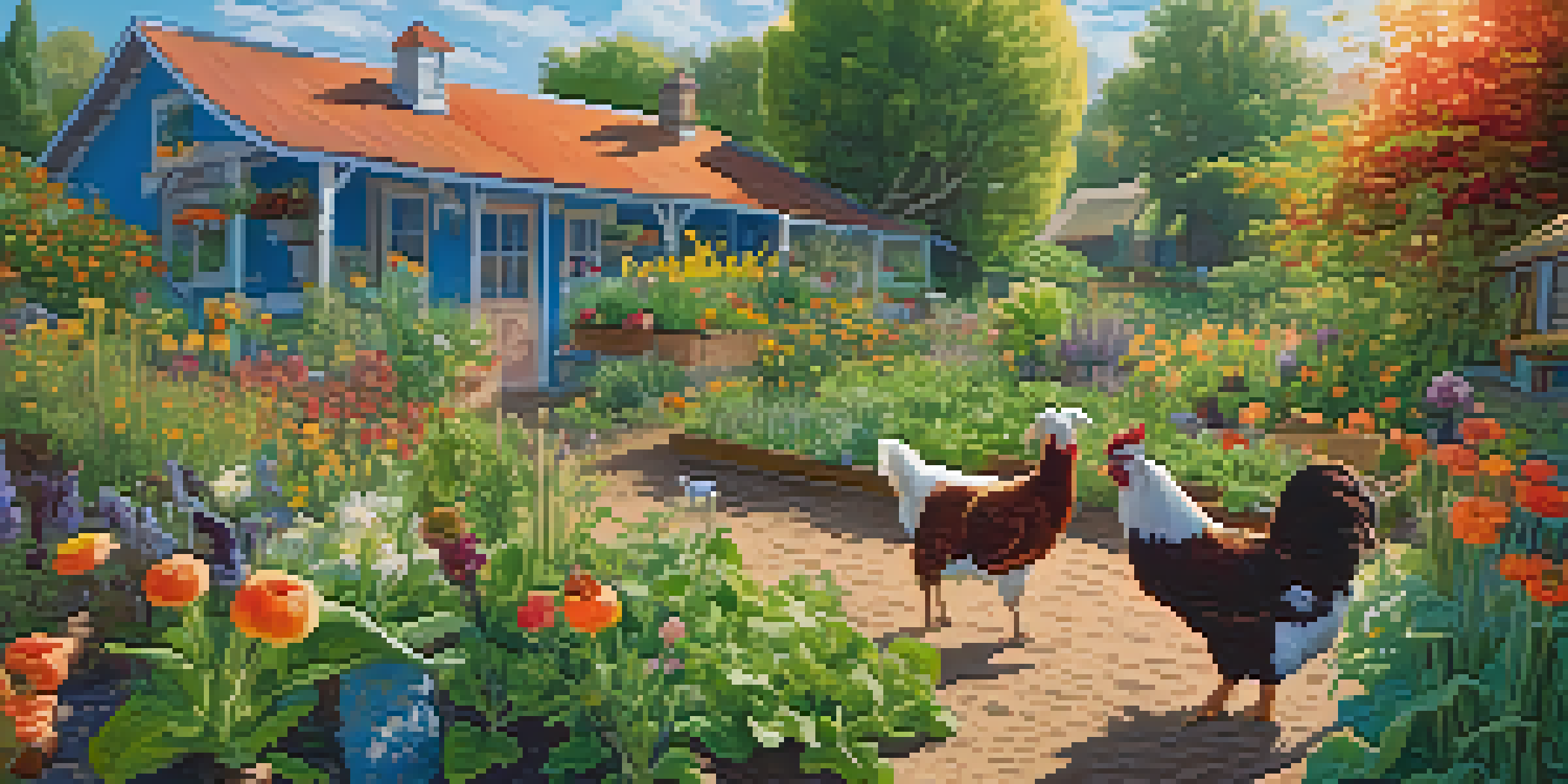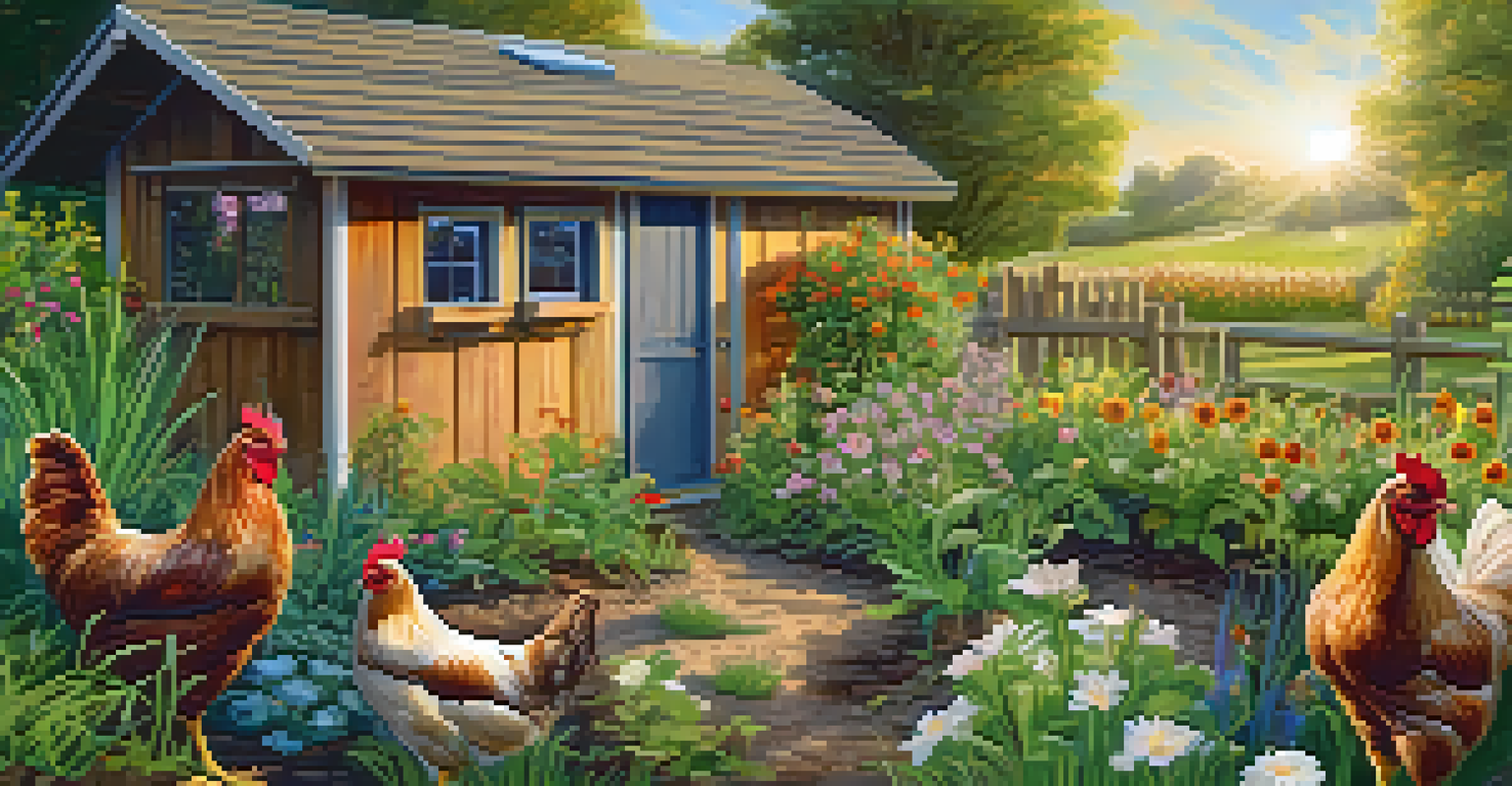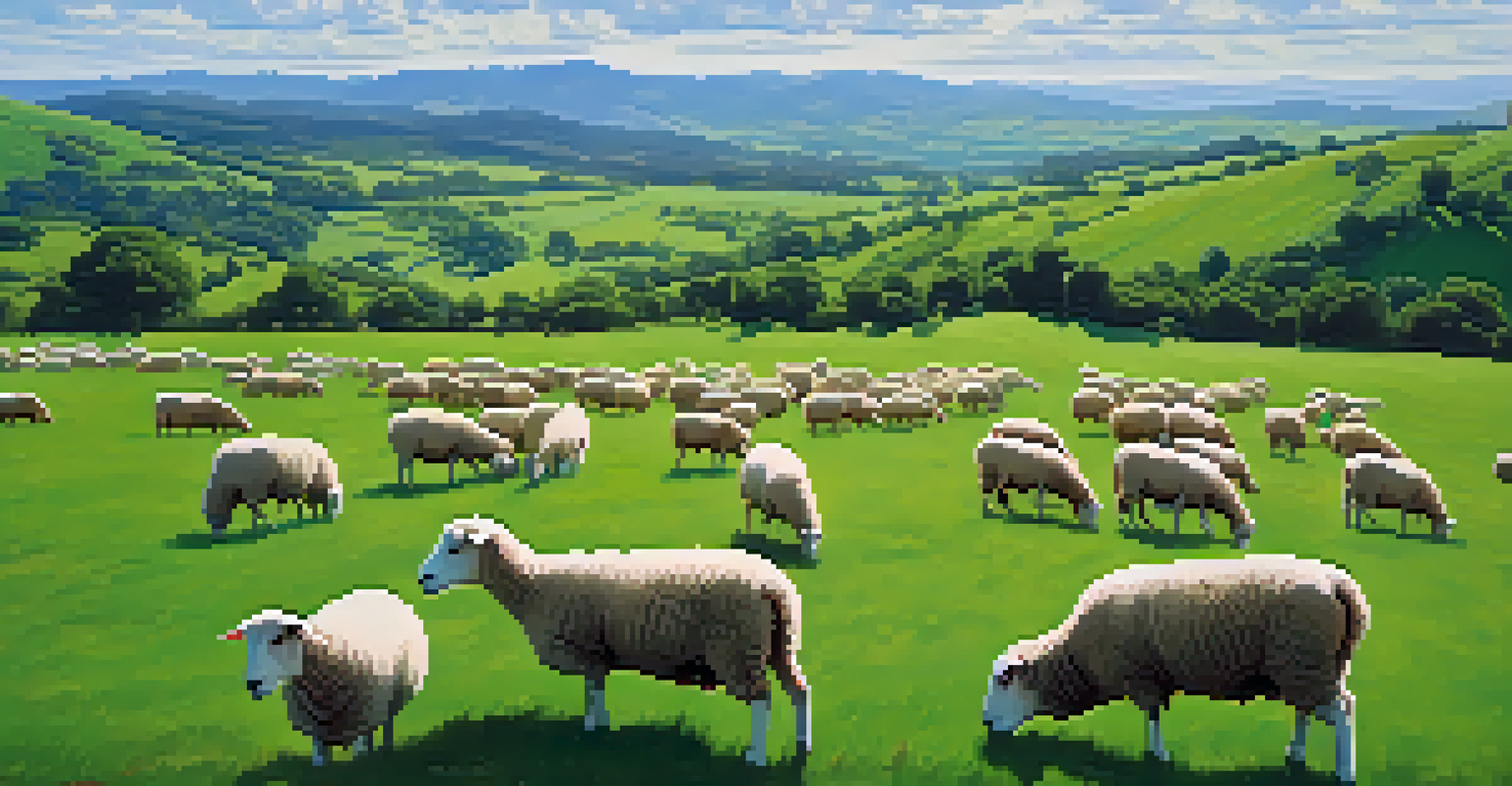Integrating Animals into Permaculture: Principles and Practices

Understanding Permaculture and Its Core Principles
Permaculture is an agricultural philosophy that emphasizes sustainable practices by mimicking natural ecosystems. It’s built on a set of principles that promote harmony between people, plants, animals, and the environment. By integrating animals into permaculture, we can create a more resilient and productive system that benefits all components of our ecosystem.
The ultimate goal of farming is not the growing of crops, but the cultivation and perfection of human beings.
The key principles of permaculture include observing natural patterns, valuing diversity, and minimizing waste. These principles encourage us to think holistically about our farming practices, considering how each element interacts with others. For example, animals can help manage pests, recycle nutrients, and promote soil health, all while providing food and companionship.
By understanding these core principles, we can begin to see how integrating animals into our permaculture systems is not just beneficial but essential. It’s about creating a balanced environment where every creature, big or small, plays a vital role. This holistic approach helps ensure that our ecosystems thrive and remain sustainable for future generations.
Selecting the Right Animals for Your Permaculture System
Choosing the right animals for your permaculture setup is crucial for success. Different animals offer unique benefits, so it’s important to consider what functions you need them to fulfill. For instance, chickens are excellent for pest control and provide manure, while goats can help with land clearing and offer milk.

When selecting animals, consider factors such as climate, available space, and your specific goals. Some people may prefer small animals like rabbits for their space efficiency, while others might opt for larger livestock like cows or pigs, depending on their needs. It’s essential to match the animal's natural behaviors with the goals of your permaculture design to ensure they thrive.
Integrate Animals for Ecosystem Health
Incorporating animals into permaculture systems enhances productivity, pest control, and soil health while creating a balanced ecosystem.
Additionally, it’s important to research each animal’s dietary and social needs to create a harmonious living environment. By carefully selecting animals that complement your ecosystem, you’ll not only enhance productivity but also foster a more resilient permaculture system. The right mix can lead to a flourishing environment where every element supports the other.
Designing Animal Housing in Permaculture
Animal housing is a critical component of integrating animals into permaculture. It should be designed to meet the specific needs of the animals while also complementing the surrounding environment. For example, chicken coops can be placed near garden beds to facilitate the natural fertilization of plants.
Permaculture is a philosophy of working with, rather than against nature.
In permaculture, the design of animal housing should prioritize sustainability and efficiency. This could mean incorporating natural materials, ensuring proper ventilation, and creating a layout that allows for easy access to food and water. Additionally, designing spaces that encourage natural behaviors, such as dust bathing or grazing, is key to keeping animals healthy and happy.
Moreover, consider the placement of animal housing in relation to your overall permaculture layout. By integrating these structures thoughtfully, you can enhance biodiversity, improve soil health, and create a more productive ecosystem. The goal is to design spaces that work synergistically with nature, providing shelter while benefiting the entire system.
Utilizing Animal Behavior for Pest Control
One of the most effective ways to manage pests in a permaculture system is by leveraging the natural behaviors of animals. Chickens, for instance, are known for their pest-hunting abilities; they eagerly scratch and peck at the ground, uncovering insects and larvae. This not only helps control pests but also aerates the soil, promoting plant health.
Integrating animals like ducks can also be advantageous, as they love to forage in muddy areas where pests often thrive. Their natural instinct to forage can significantly reduce the need for chemical pest control, aligning perfectly with permaculture values. Observing and understanding these behaviors allows us to use animals as a natural solution to common agricultural challenges.
Animal Manure Boosts Soil Fertility
Animal manure is a nutrient-rich resource that rejuvenates soil health and promotes microbial activity, essential for thriving plant growth.
By encouraging beneficial animal behaviors in your permaculture design, you can create a balanced ecosystem that minimizes pest populations naturally. This approach not only fosters a healthier environment but also reduces dependency on synthetic chemicals, promoting sustainability. Ultimately, integrating animals for pest control is about working with nature rather than against it.
Enhancing Soil Health with Animal Manure
Animal manure is often considered a goldmine in permaculture for enhancing soil health. It’s rich in nutrients that can rejuvenate tired soils, promote microbial activity, and improve overall fertility. By incorporating manure into compost or directly applying it to the soil, we can create a nutrient-rich foundation for plant growth.
Different types of manure offer varying nutrient profiles. For instance, chicken manure is high in nitrogen, making it an excellent choice for boosting plant growth. However, it’s important to compost manure properly to avoid burning plants or introducing pathogens. This process also allows beneficial microbes to thrive, further enhancing soil quality.
Integrating animal manure into your permaculture system fosters a closed-loop cycle, reducing waste and promoting sustainability. By recycling nutrients naturally, you not only build healthy soils but also contribute to a thriving ecosystem. In this way, animals become an integral part of maintaining soil health and promoting biodiversity.
Creating Synergies Between Plants and Animals
Integrating animals into permaculture is not just about adding livestock; it’s about creating synergies between plants and animals. For example, planting certain crops alongside animals can enhance growth and yield. This might include using companion planting techniques where plants benefit from the presence of animals, like using clover to attract beneficial insects for your chickens.
The concept of polyculture—growing multiple species together—works well in permaculture systems that include animals. By diversifying plant life, you can create microenvironments that support various animal species, fostering a balanced ecosystem. This diversity helps to mitigate risks associated with pests and diseases, promoting resilience.
Rotational Grazing Enhances Land Health
Rotational grazing allows for vegetation recovery and improved soil health, mimicking natural grazing patterns for sustainable land management.
Additionally, animals can help with plant management, from seed dispersal to controlling invasive species. When plants and animals work together, they create a dynamic system that enhances productivity and sustainability. The goal is to utilize these relationships to create a thriving permaculture environment where every element supports the others.
Implementing Rotational Grazing in Permaculture
Rotational grazing is a technique that can significantly benefit both animals and the land in a permaculture system. By moving animals between different grazing areas, you allow vegetation to recover and regenerate, promoting healthy plant growth. This practice mimics the natural grazing patterns of wild herbivores, which can lead to improved soil health and biodiversity.
Implementing rotational grazing requires careful planning to ensure that each grazing area has adequate recovery time. It also involves monitoring the health of the pasture and the animals to determine the best timing for moving them. By doing so, you can prevent overgrazing, which can lead to soil erosion and loss of plant diversity.

Moreover, this method can enhance nutrient cycling, as animals graze on the plants, fertilize the soil, and stimulate growth. The result is a more productive and resilient permaculture system that benefits both the animals and the landscape. Rotational grazing exemplifies how thoughtful management can create a balanced ecosystem that thrives.